Search Results
Fine Jewelry University Articles matching: “Gold FL”
Showing only FJU Article results. Click here to show all results.
Fine Jewelry University (Show All FJU Articles)
-
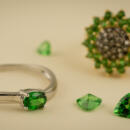
Gem in the Spotlight: Tsavorite Garnet
…nomenclature of gemstones follows certain rules, and according to modern mineralogical methods, gemstones are given a name which ends in “-ite”. In honor of the Tsavo National Park where it was discovered and the Tsavo River which flows through it, the gem received the name Tsavorite. It is also less commonly referred to as Tsavolite. Mythology and Lore Unlike many of the other gemstones we write about, Tsavorite does not have a rich history or lore, given its recent …
-
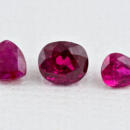
Gem in the Spotlight: Ruby
… index of 1.762-1.770 and a specific gravity of 4.00. A unique optical property of rubies is that they emit fluorescent light at a very specific wavelength (694 nanometers) under certain conditions. Scientists used this fact to build …
-
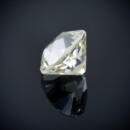
The History of Diamond Cuts
… engagement ring. Archduke Maximilian of Austria gave her a ring that was set with a point cut diamond and thin flat pieces of diamonds in the shape of an “M” in 1477. The Earliest Diamond Cuts Once it was understood that only diamond … eyes. It has anywhere from 3 to 24 facets coming to a point in the middle. But its most recognized aspect is the flat bottom. Basically, it is a crown without a pavilion. Interesting fact #2: Some diamond cuts do not have a standard …
-
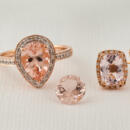
Gem in the Spotlight: Morganite
… wearing Morganite on their crowns or other such legends. Morganite’s lore and traditions are more focused on gem power. Morganite as a power gem is full of associations. Some believe it to be a powerful stone which facilitates the flow of energy throughout the body due to its ability to bring pure love to the wearer. Morganite is also believed to balance emotions and bring harmonizing fulfillment as it releases any blocks to the channels of energy and love. It is …
-
Understanding the Diamond Buying Game
… pavilion and extremely thin crown. Other ways are how thick the girdle is and how it is made. If the diamond has fluorescence is an issue. And if the fluorescence has a negative impact on the diamond is another question. The nature and…
-
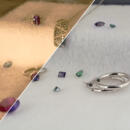
Gem in the Spotlight: Alexandrite
… the extremely rare, color-change variety of a gem species called Chrysoberyl. It appears bluish-green in daylight, fluorescent light, and some LED light. Under incandescent light, candle, and firelight, alexandrite appears purplish-red… very well, only transmitting green and red light. This means that depending on the light source the stone will reflect more of the accent colors of light. Since fluorescent light has a stronger greenish-blue component, the stone …
-
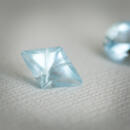
Gem in the Spotlight: Aquamarine
… but this tiara she special ordered from Garrard in 1957. The Gemology of Aquamarine Like emerald, aquamarine is a member of the beryl family (along with morganite, heliodor, and others). Unlike emerald, it is frequently free of flaws and often occurs in large crystals. Aquamarine’s main pigment comes from iron. The color spectrum of aquamarine varies from very pale blue to a deep blue, the finest specimens being the deepest in color. Most aquamarine stones have a …
-
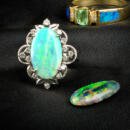
Gem in the Spotlight: Opal
…, making it susceptible to scratches and damage from sharp impacts. Household chemicals and extreme temperature fluctuations can also harm opals, so gentle care is essential. To keep opal at its luminous best, wiping it clean with a … body color, many of these stones have little to no play of color. The best stones have strong greens and blues that flash through the orange body color. Boulder Opal: Boulder opals are gem opal material that still incorporates some of …
-
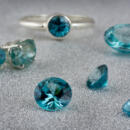
Gem in the Spotlight: Blue Zircon
… color. But, zircon can be almost any color you can imagine including red, yellow, orange, brown, green, champagne, golden, saffron, and colorless. Zircon colors are pure and have that distinctive fire that sets it apart from other gems. … of zircon was used in jewelry to mimic diamond. Why? Natural zircon is known for its scintillation, brilliance, and flashes of color or fire just like diamond. Zircon also is known for its variety of colors. Blue zircon is the most …